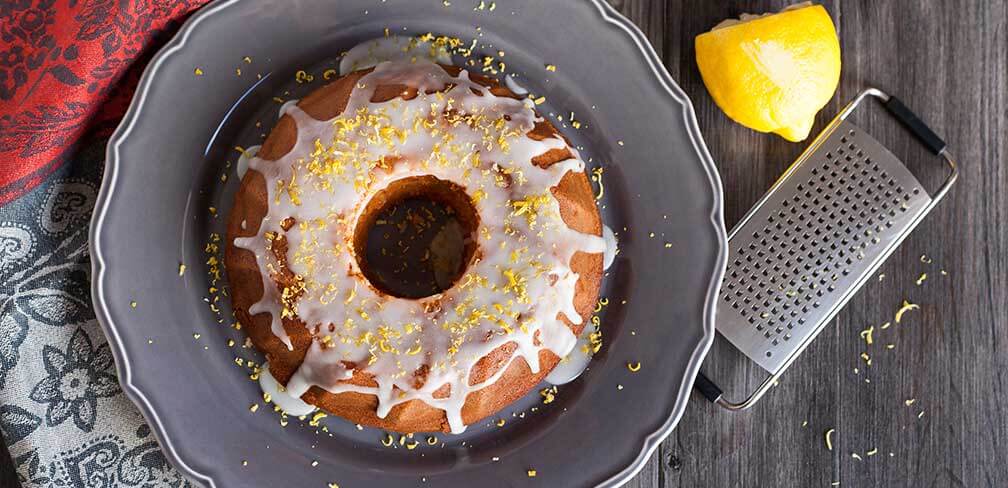Citrus Almond Chiffon Cake

Ingredients
- 2 cups flour
- 1/4 cup cornstarch
- 1 cup sugar
- 1/2 teaspoon baking soda
- 1/2 teaspoon salt
- 1-7 oz box Odense Almond Paste (grated using large hole side of a box grater)
- 1/2 cup light flavor oil such as safflower
- 6 large eggs (room temperature), separated
- 2/3 cup water
- 1 tablespoon (each) finely grated lemon and orange rind
- 4 large egg whites
- 1 1/4 teaspoons cream of tartar
Recipe by Odense Test Kitchen
This light and airy cake is infused with the subtle flavors of lemon, orange and almond. It’s the perfect cake for a crowd. Dress it up with a fancy frosting, seasonal fruits or simply serve as is.
Time
35 minutes to assemble
45-50 minutes to bake
2 hours resting time
45-50 minutes to bake
2 hours resting time
Yield
1-10 inch angel food pan
Ingredients
- 2 cups flour
- 1/4 cup cornstarch
- 1 cup sugar
- 1/2 teaspoon baking soda
- 1/2 teaspoon salt
- 1-7 oz box Odense Almond Paste (grated using large hole side of a box grater)
- 1/2 cup light flavor oil such as safflower
- 6 large eggs (room temperature), separated
- 2/3 cup water
- 1 tablespoon (each) finely grated lemon and orange rind
- 4 large egg whites
- 1 1/4 teaspoons cream of tartar
Directions
- Preheat oven to 350°F. Sift flour, cornstarch, sugar, baking soda, and salt into a large bowl.
- In a mixing bowl (or food processor) add Almond Paste (grated using large hole side of a box grater), oil, 6 egg yolks, water, lemon and orange rind. Beat on high (or process) until mixture is lemon colored, smooth and almost doubled in size. Pour into flour mixture and mix until just combined.
- Add 10 egg whites to a 'very clean' mixing bowl (and beaters). Beat until frothy. Add cream of tartar and beat until stiff peaks form, peaks that will hold their shape and not slump.
- With a rubber spatula, add egg whites to wet ingredients. Gently (so air cells do not deflate) fold* together until just combined.
- Carefully pour batter into ungreased pan, spreading evenly. Run a thin knife through batter to remove any air pockets.
- Bake 45-50 minutes or until cake is golden brown and a cake tester inserted in middle comes out clean. Invert pan on a bottle neck and cool cake completely.
- Loosen cake sides with a long, thin metal spatula or knife. Invert onto wire rack and then onto serving plate. Serve as is, with a favorite icing or seasonal fruits.
- *Folding is not mixing. It is done by placing the lighter ingredients (egg whites) on top of the heavier batter. Using a rubber spatula, one cuts down vertically through the two mixtures, across the bottom of the bowl and up over to the nearest side, rotating the bowl a quarter turn with each stroke. This down-across-up-and-over motion gently combines the two mixtures into one batter.
Did you make this recipe? We want to see! Tag @odensebakingclub on Instagram.
